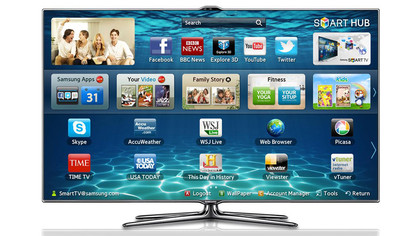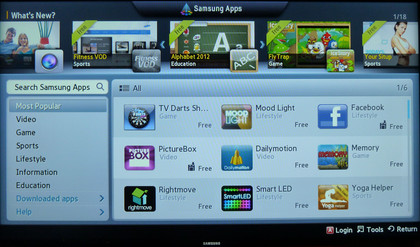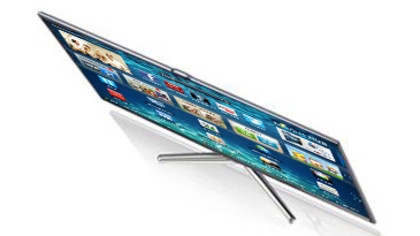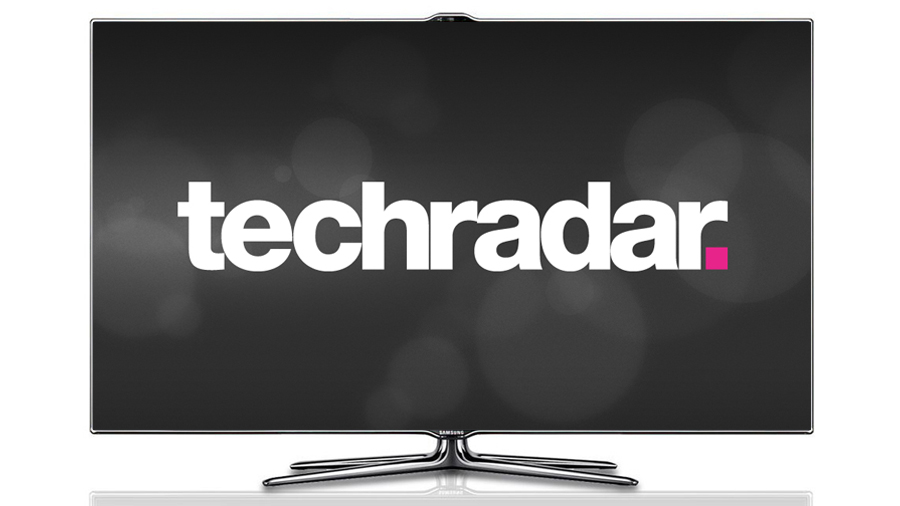Why you can trust TechRadar
The first time you settle down to watch the Samsung UE46ES7000, you might very well think you've died and gone to TV heaven.
Because, as with so many high-end Samsung televisions before it, this 46-inch HD TV shows an uncanny knack for delivering truly crowd-pleasing images with the sort of bright, colourful fare that makes up the majority of broadcast TV fodder.
Colours, for instance, are exceptionally dynamic, blasting off the screen with an intensity rarely - if ever - seen elsewhere in the flatscreen TV world. This helps pictures look extremely punchy and eye-catching, even if you're watching in a very bright room environment.
This will immediately make it seem like a very appealing option for a typical family room, where dimming the lights for serious TV viewing is seldom an option.
It's important to stress too that despite their richness, colours look very natural indeed, thanks to a winning combination of a good balance that finds no tone dominating over others; tones that all seem calibrated to look their best with video rather than PC content; and some brilliant subtlety when it comes to portraying even the most marginal of colour tone shifts and blends. Gorgeous.
Also quite outstanding is the sharpness of the Samsung UE46ES7000's HD pictures, as the screen's generally very high brightness output levels combine with superb detail reproduction to ensure that your eyes are constantly being treated to the maximum impact possible from good quality HD sources.
Also playing a significant part in the Samsung UE46ES7000's terrific HD sharpness is its great motion handling.
Sign up for breaking news, reviews, opinion, top tech deals, and more.
Even with none of the provided motion processing systems in play, objects pass across the screen fluidly and without significant signs of the sort of blurring and resolution loss associated with lower-rent LCD technology.

Samsung's motion processing is, however, of a high enough quality to warrant at least a few trial runs to see if you like it. Though if you do try it out, we'd suggest that you only use its 'Clear' setting or, if you're feeling adventurous, the Custom setting with its adjustable judder and blur elements set down to their two or three level.
We've talked a lot about HD so far, but this isn't to say that the Samsung UE46ES7000 isn't also very accomplished with standard definition.
In fact, it upscales standard definition to the screen's Full HD resolution extremely well, adding detail without making pictures look noisy or brittle. So much so, in fact, that you will probably prefer to leave the set's noise reduction processing off (as you definitely should while watching HD).
It's also impressive to note while watching standard definition TV that colours don't lose their richness or naturalism - something that happens to some extent quite commonly with LCD technology.
Under normal daylight viewing conditions with typical broadcast fare, the Samsung UE46ES7000 even provides some impressive black levels alongside the rich colours and crisp whites, without sacrificing the brightness of those colours and whites in the process.

Many of the picture talents just described make the Samsung UE46ES7000 a strong screen for HD console gaming. So it's a relief to find that it doesn't fall at the input lag hurdle, measuring on average only around 34ms - a low enough figure to leave your gaming skills more or less unaffected.
Donning a pair of Samsung's remarkably lightweight 3D glasses finds the Samsung UE46ES7000 producing an outstanding effort. There's only a tiny amount of crosstalk ghosting noise, which means you can fully appreciate the Full HD resolution and impeccable sense of depth in evidence with 3D Blu-rays.
The Samsung UE46ES7000's 3D images are also notable for their brightness and rich colour saturations versus of those of most active 3D rivals.
The Samsung UE46ES7000's pictures do have an Achilles' Heel, though: backlight inconsistency. This is seldom evident during normal TV viewing conditions, but if you dim the lights low and find yourself watching a dark scene using any of the picture presets provided by Samsung - including the Movie one - you'll become very aware of a number of areas in the picture that look unnaturally brighter than others. This is caused by the screen failing to evenly disperse the light coming in from its edges.
The good news is that you can pretty much eliminate these inconsistency problems by massively knocking back the TV's backlight level. Personally we found that the best results were obtained by taking the backlight all the way down to its four (out of 20) point, though you might be able to get away with level six or seven if there's still a bit of ambient light in your room.

There is, of course, a problem with knocking the backlight down so low to combat backlight inconsistencies. Namely that the image's overall brightness takes a major hit in the process.
This becomes particularly obvious if you sit the Samsung UE46ES7000 alongside one of the outstanding new Sony HX853 LED TVs, which use a superb local dimming implementation to produce both deeper blacks and much more brightness while showing the same dark scenes that cause the Samsung UE46ES7000 some trouble.
A couple of other smaller issues with the Samsung UE46ES7000's pictures are a slightly bluish tone to very dark parts of the picture unless you keep the backlight lower than its six setting, and a pretty limited horizontal viewing angle.
To wrap this section up, it's worth quickly comparing the Samsung UE46ES7000's pictures with those of the flagship Samsung ES8000 models. The short verdict is that they're not quite as good, since the more sophisticated micro dimming engine in the flagship set delivers more shadow detail, a slightly better contrast balance and slightly more colour finesse.
This doesn't alter the fact, though, that for most of the time, so long as you take the time to set up your own settings for watching films, the Samsung UE46ES7000's pictures are very good indeed.

John has been writing about home entertainment technology for more than two decades - an especially impressive feat considering he still claims to only be 35 years old (yeah, right). In that time he’s reviewed hundreds if not thousands of TVs, projectors and speakers, and spent frankly far too long sitting by himself in a dark room.
